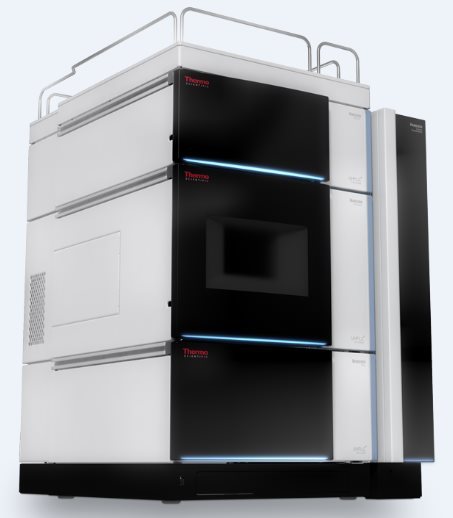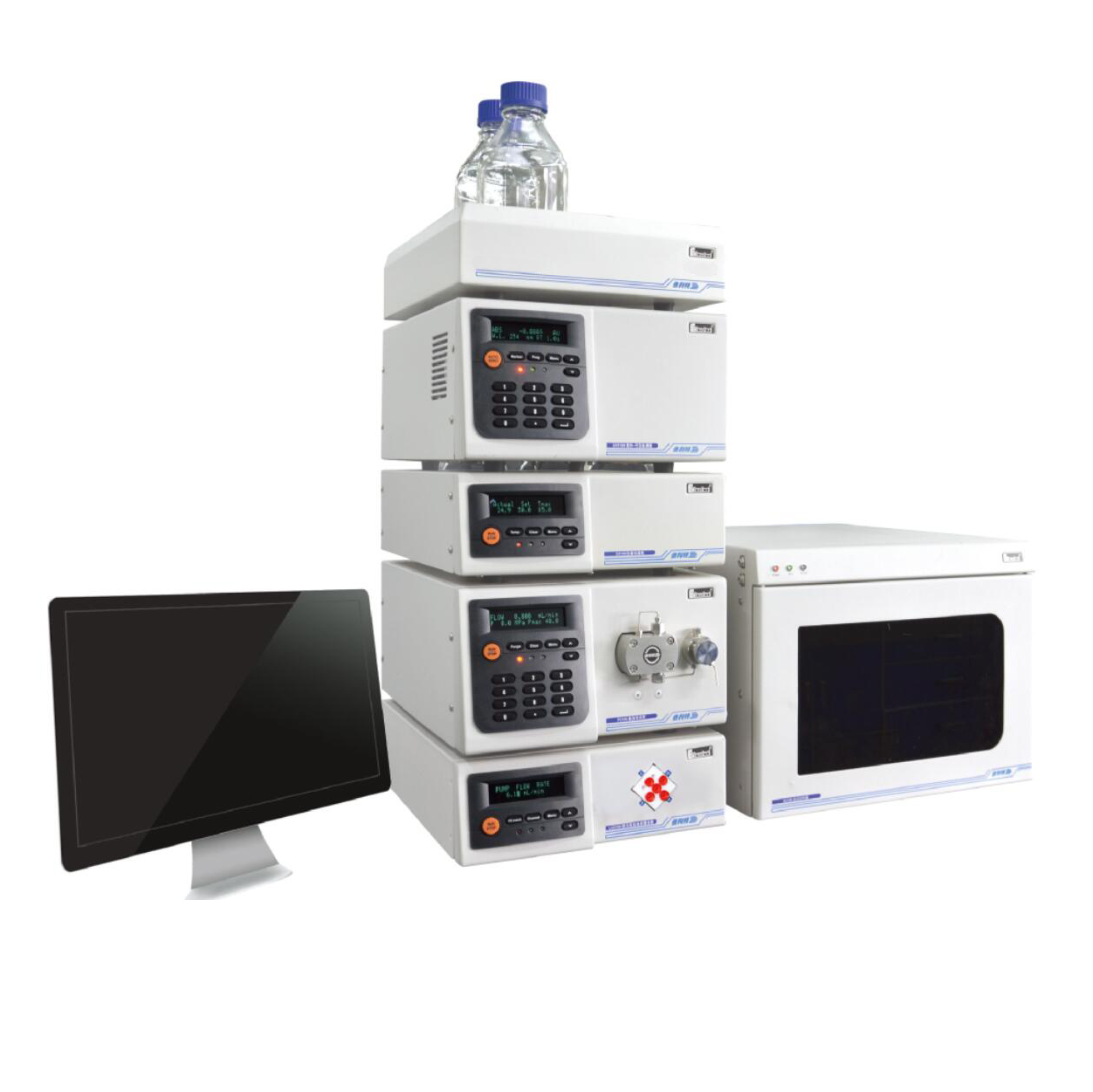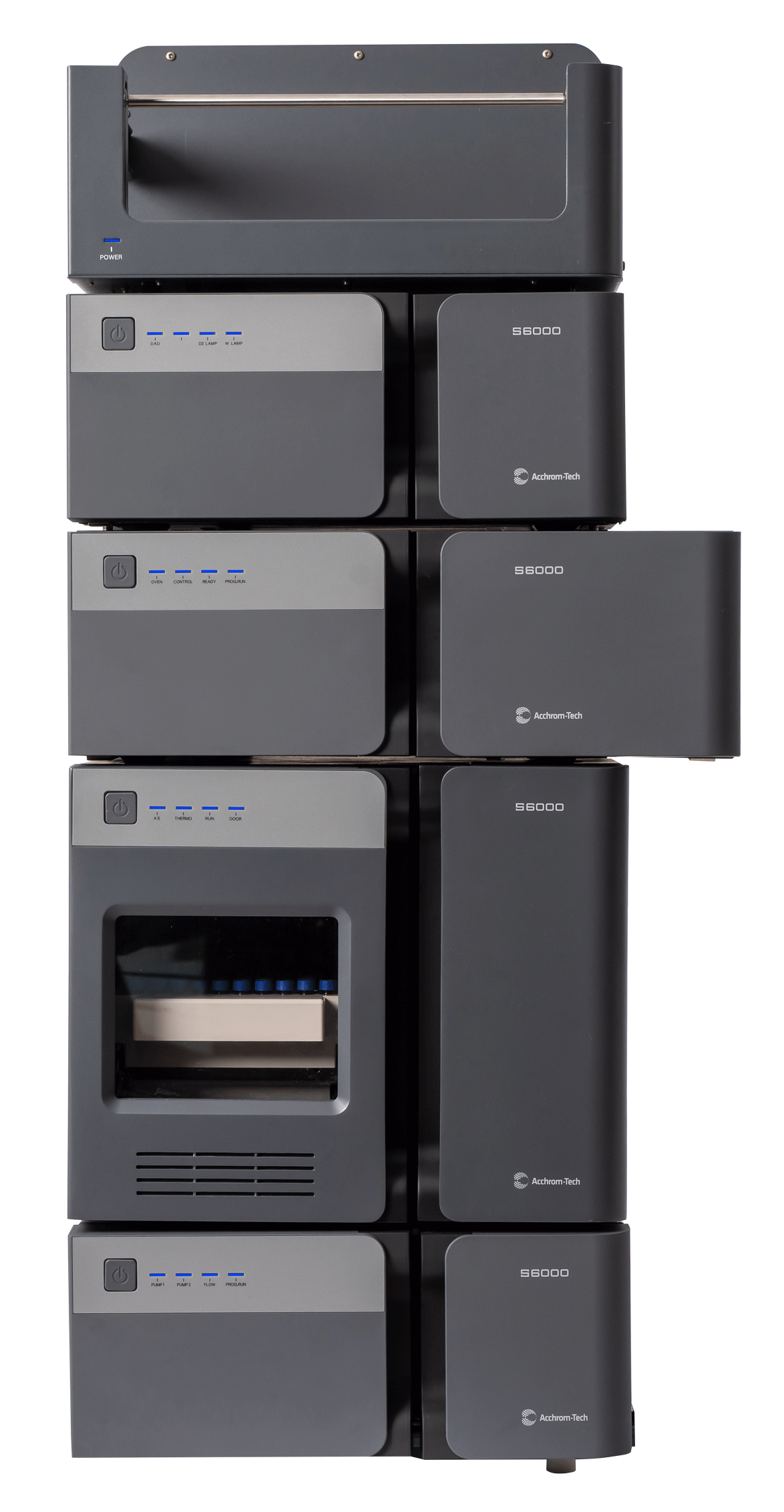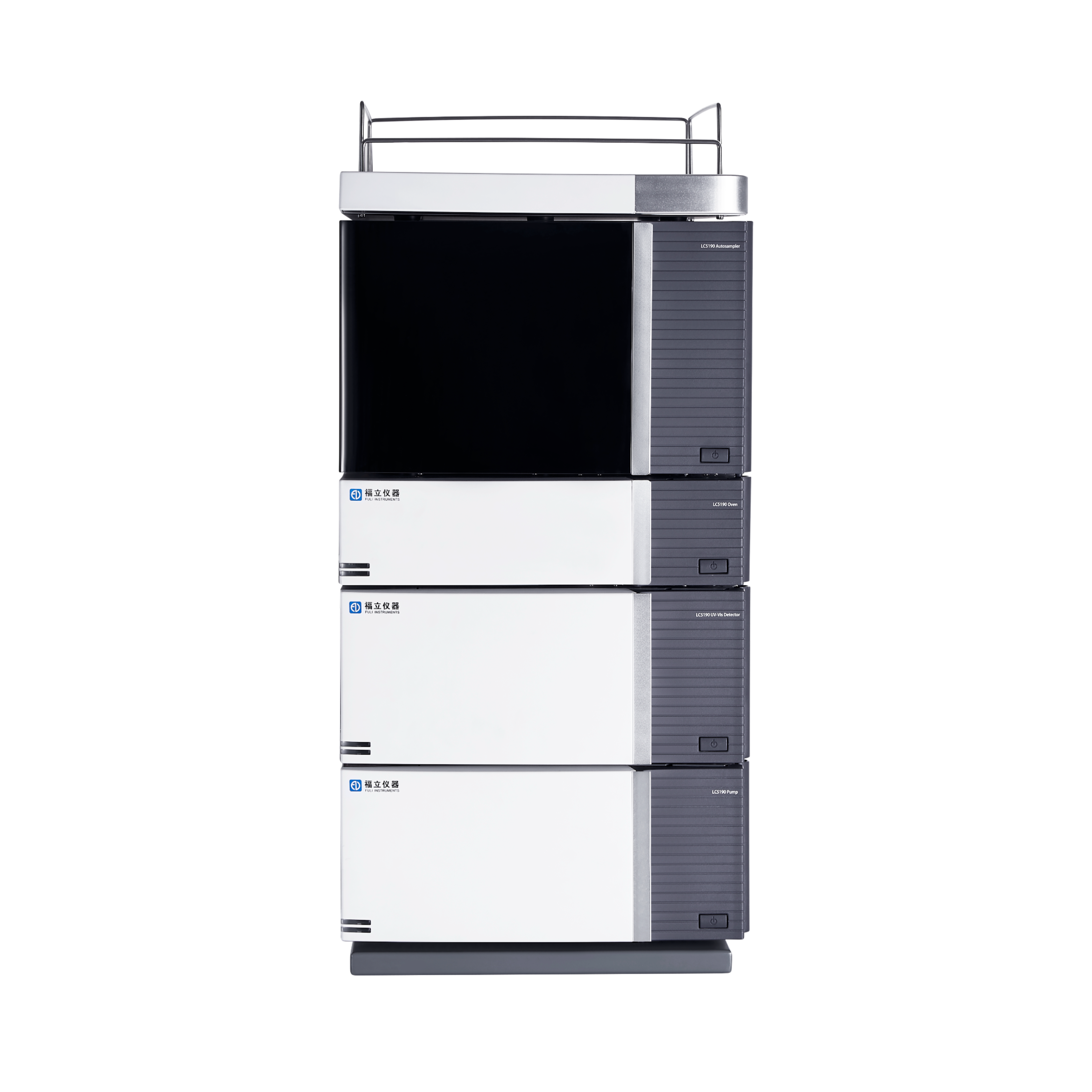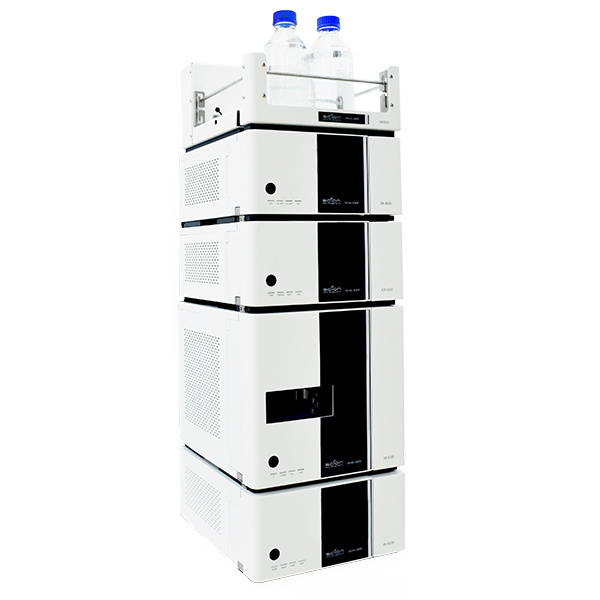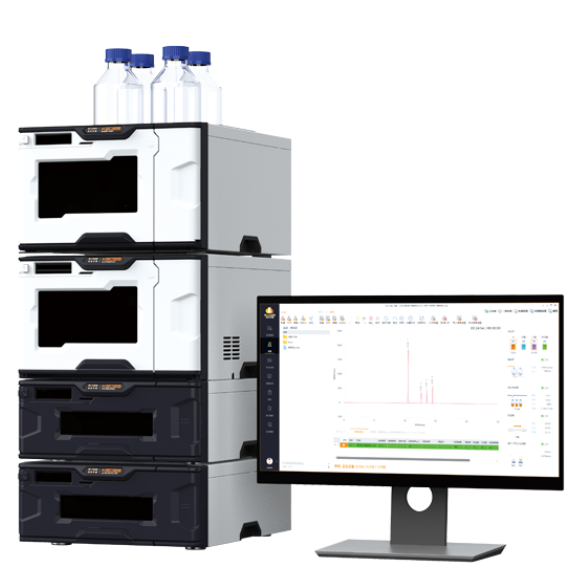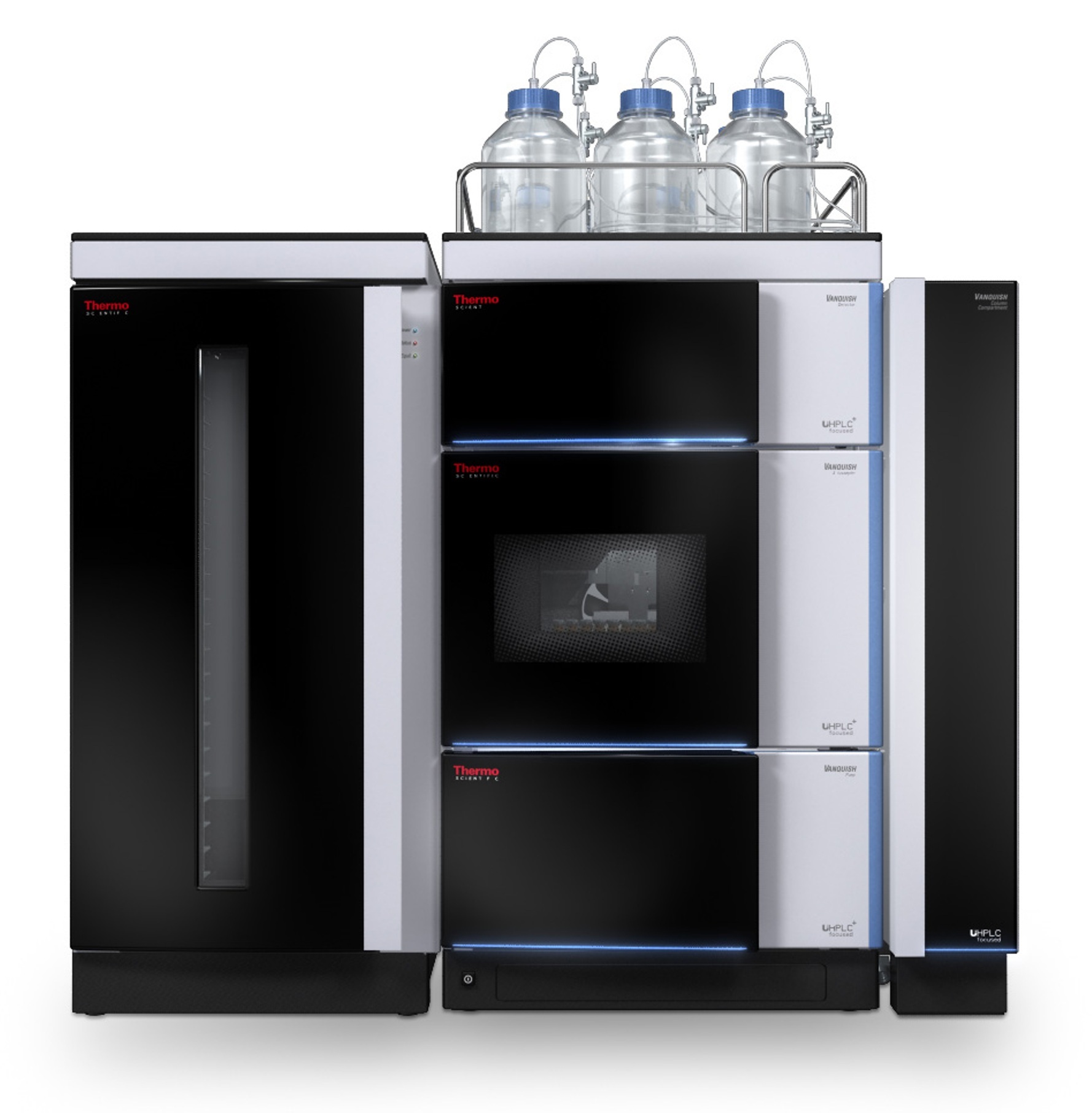方案详情
文
The comprehensive information acquired by vDIA mode generated more efficient screening and confirmation results while the result of targeted quantitation was also gained at the same time, which suggested good performance for both qualitative
and quantitative analysis with vDIA mode.
方案详情

Evaluation of Variable Data IndependentAcquisition (vDIA) Approach for Non-target Screening of Veterinary Drugs inAnimal Feed Zhe Zhou, Zheng Jiang; Thermo Fisher Scientific, Shanghai, China Overview Purpose: To evaluate the effect of variable Data Independent Acquisition (vDIA) fornon-target screening over the classical data dependent MS2 (ddMS2) and All lonFragmentation (AIF). Methods: Animal feed samples spiked with veterinary drugs were analyzed withdifferent scan modes for comparison. Results: The comprehensive information acquired by vDIA mode generated moreefficient screening and confirmation results while the result of targeted quantitation wasalso gained at the same time, which suggested good performance for both qualitativeand quantitative analysis with vDIA mode. Introduction Due to the high specificity, sensitivity, and accuracy, the wide use of high resolutionaccurate mass (HRAM) mass spectrometers in residue analysis leads to numerous newoptions. Full scan with data dependent MS2(ddMS2) acquisition has proved to be apractical way for target and non-target screening and confirmation. However, MS2triggering relies on the intensity of parent ions and thus might cause the possibility oftriggering missing for low concentrate compounds or co-elution peaks. AIF is anotherstrategy for non-target screening with all co-eluted precursor ions to be fragmented, butthe selectivity will be sacrificed due to no selection of parent ions. Herein vDIAonThermo ScientificTM Q ExactiveTM Focus Hybrid Quadrupole-Orbitrap massspectrometer was tested using 150 veterinary drugs spiked in animal feed matrixsamples. By applying vDIA, the full scan mass range is divided into several narrowerranges which enhance the dynamic range for the fragment scans and also result inhigher selectivity and sensitivity of the characteristic fragments needed for compoundconfirmation.At the same time, all options for suspect screening or even unknownscreening remain fully available as in AIF. Methods Sample Preparation 150 veterinary drug standards (50 ppb for each single compound) were mixed anddiluted with methanol-extracted blank matrix of mixed piglet feed into 50 ppt, 500 ppt, 5ppb, and 25 ppb. Liquid Chromatography Thermo Scientific TM UltiMate TM 3000 Binary RSLC system was used as HPLC system.Thermo Scientific TM AccucoreTM C8 (100×2.1 mm,2.6 pm) column was used forseparation. Mobile phases: 0.01% formic acid in water (A) and 0.01% formic acidin acetonitrile (B), gradient elution was processed as Table 1. TABLE 1. Gradient elution program. Time (min) A B 0 95 5 15 5 95 17 5 95 18 95 5 20 95 5 Q Exactive Focus quadrupole-Orbitrap mass spectrometer (Figure1). lonization Condition: Electrospray (ESI) mode, heat temperature 350°C;capillarytemperature 325°C; spray voltage 3.2 kV (Positive) and 2.8 kV (Negative); sheath gasflow 40 arb; auxiliary gas flow 10 arb, collision energy 20, 30, 40.ddMS2 Mode: Full scan at the resolution of 70,000 FWHM and the scan range of 100-1000 m/z, while inclusion-list-based data dependent MS? at the resolution of 17,500FWHM. Isolation window 1.5amu. Top1. Dynamic exclusion 8s. AIF Mode: Full scan at the resolution of 70,000 FWHM and the scan range of 100-1000m/z, while AIF MS? at the resolution of 17,500 FWHM and the scan range of 100-1000. vDIA Mode: Full scan at the resolution of 70,000 FWHM while data independent MS2 atthe resolution of 17,500. Isolation windows and scan ranges were set according to Figure 2. FIGURE 1.Q Exactive Focus mass spectrometer with Ultimate 3000 LC. FIGURE 2. Isolation windows in vDIA mode. Data Analysis Data was processed by automatic processing using Thermo ScientificTM TraceFinderTMsoftware which comprises several basic confirmatory criteria: accurate mass of parention in full scan, isotope pattern of parent ion in full scan, compound-specific fragmentions, retention time, and so on. Results Evaluation of Separation Conditions With regard to the large number of target compounds, careful attention should be paidto the evaluation of the separation system. 150 veterinary drugs were separated evenlyunder the optimized LC condition, but there was still a large number of overlappingchromatographic peaks that can be observed from 1 min to 11 min (Figure 3). FIGURE 3.Scattergram demonstrating elution of target analytes within thechromatographic run. Comparison of Three MS Scan Modes The full scan-ddMS2 method with the inclusion list of target analytes has been provedto be a practical way for target and non-target screening and confirmation.This scanmode comprised the full scan of parent ions followed by successive isolation of ionspresent on the list of targeted compounds. The full scan-AlF is another strategy for non-target screening, all co-eluted precursorions will be passed through quadrupole and be fragmented. The selectivity will besacrificed due to no selection of parent ions and the sensitivity will be restricted due tothe lower ratio of target product ions in detector. The full scan-vDIA is a new scan mode on the Q Exactive Focus mass spectrometer,the full scan mass range is divided into variable smaller ranges which enhances thedynamic range for the fragment scans, resulting in higher selectivity and sensitivity ofthe significant fragments needed for compound confirmation. Figure 4 shows aschematic of ddMS2,vDIA, and AIF scan modes. FIGURE 4. Schematic of ddMS2,vDIA and AIF scan mode. Since the full scan-ddMS? method triggers MS/MS scan according to the intensity ofparent ions in pre-full scan, the lower intensity compounds will be interfered by thehigher ones and thus causes the possibility of triggering missing among co-elutionpeaks. There were at least seven compounds eluted at 5.6 min and as a result ofintensive co-elution, Azure A was not triggered by the ddMS? method. Instead, all theproduct ions of seven compounds were acquired by the vDIA method and the selectivityof product ions is even slightly better than parent ions such as Azure A. Figure 5 showsa comparison of product ions acquired by ddMS2 and vDIA in the case of co-elutionpeaks. FIGURE 5. Comparison of product ions acquired by ddMS2 and vDIA in the caseof co-elution peaks. Fullscan 238.09718 2-Amino-5-Benzoyl-Benzimidazole Compared with AIF, the vDIA method narrows isolation windows and thus reduces muchof the background interference caused by no selection of parent ions. Figure 6 showsthe XICs of product ions for Zearalenone, Ractopamine, and Sulfadimethoxine as anexample. The background noise and interference peaks were significantly visible in AIFXICs which became much cleaner in vDIA XICs. FIGURE 6. Background interference exist in AlF filtered out by vDIA. Screening Result vDIA data was processed by the TraceFinder software described before. The criteria foridentification of target analytes and further data evaluation are peak detection of parention within theoretical accurate mass ±5 ppm extraction window, at least onecharacteristic fragment ion within 5 ppm mass tolerance and intensity higher than 5,000,and isotope pattern score of parent ion greater than 75. Figure 7 shows the TraceFindersoftware screening result view. FIGURE 7. TraceFinder screening result view. The result found that the ratio of spiked veterinary drugs confirmed by vDIA strategy can reachup to 96 percent in this case, the number of which turned out to be more than that confirmedunder ddMS? with inclusion list. Also, vDIA approach showed more clean product ion spectrathan AIF and allowed approximately 85 percent of compounds to be detected and confirmedbelow the concentration of 5 ppb, which means vDIA can achieve a more specific, sensitive.and comprehensive screening result. Figure 8 is a histogram that demonstrates the sensitivityof target analytes. FIGURE 8. Histogram demonstrating the sensitivity of target analytes. Quantitative Result Due to the division of full scan range and HRAM MS? data, vDIA mode couldachieve a highly sensitive and wide linear range quantitative result asdemonstrated in Figure 9, and at the same time, all options for quantitation remainavailable in this strategy. FIGURE 9. TraceFinder quantitative result view. Quan Peak Albendazole RT: 7.20|5ppt_DIA_CE30 1/1 RT: 7.20AA: 102774.15ASHN::N3:I6IN5N5F5.20 RT(min) m/z: 266.10 Calibration Curve Y=2.076e4X-1.081e3;R^2: 0.9997; Origin: Ignore; W: 1/X^2; Area 600000000-500000000-400000000-300000000-200000000-100000000- 10000T Sample Type Level ActualRT Formula %Diff Height Aa Aa Aa Aa A Aa Aa 1 Albendazole 2 3 4 5 DexmedetomidineMalachite green oxalate saltSulfameterTilmicosin 2CTrenbolone 1 7.20 C12H15N3O2S S (0.04 36565 2 7.193 7.197.20 7.20 -0.63 258885 291068427826163 132559112 Conclusion Compared to traditionally applied ddMS? and AIF methods for residue screening,the vDIA strategy is capable of dividing full scan mass range into several narrowerranges which enhances the dynamic range, resulting in higher sensitivity offragment ions needed for confirmation. It also retains all the characteristicfragment ions and thus allows for non-target screening and retrospective datamining as well as confirmation and quantitation of, theoretically, an unlimitednumber of compounds within a single analytical run. vDIA is not available in the United States of America vDIA is not available in the United States of America vDIA is not available in the United States of America Evaluation of Variable Data Independent Acquisition (vDIA) Approach for Non-target Screening of Veterinary Drugs in Animal Feed The comprehensive information acquired by vDIA mode generated moreefficient screening and confirmation results while the result of targeted quantitation wasalso gained at the same time, which suggested good performance for both qualitativeand quantitative analysis with vDIA mode.
确定
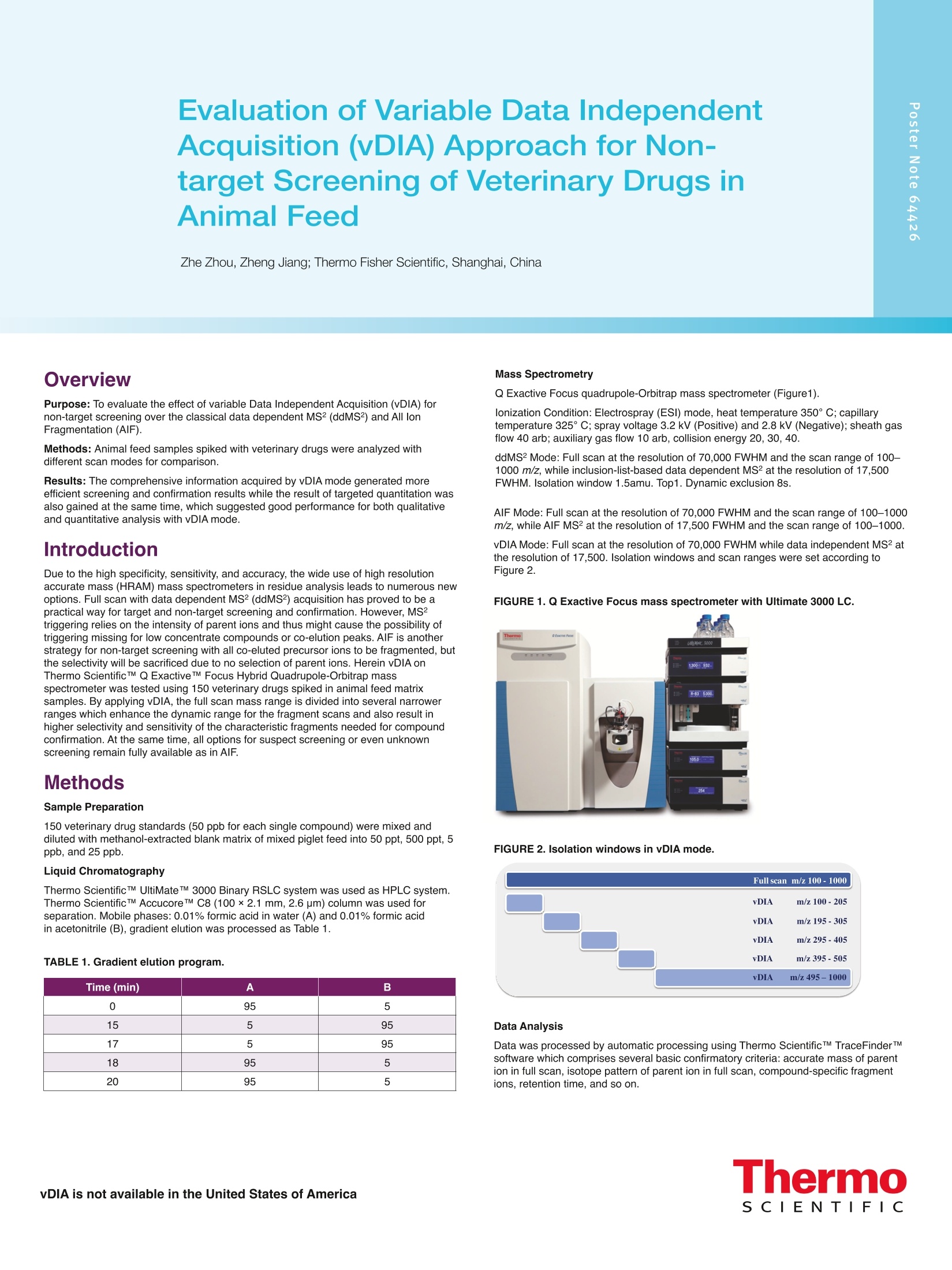
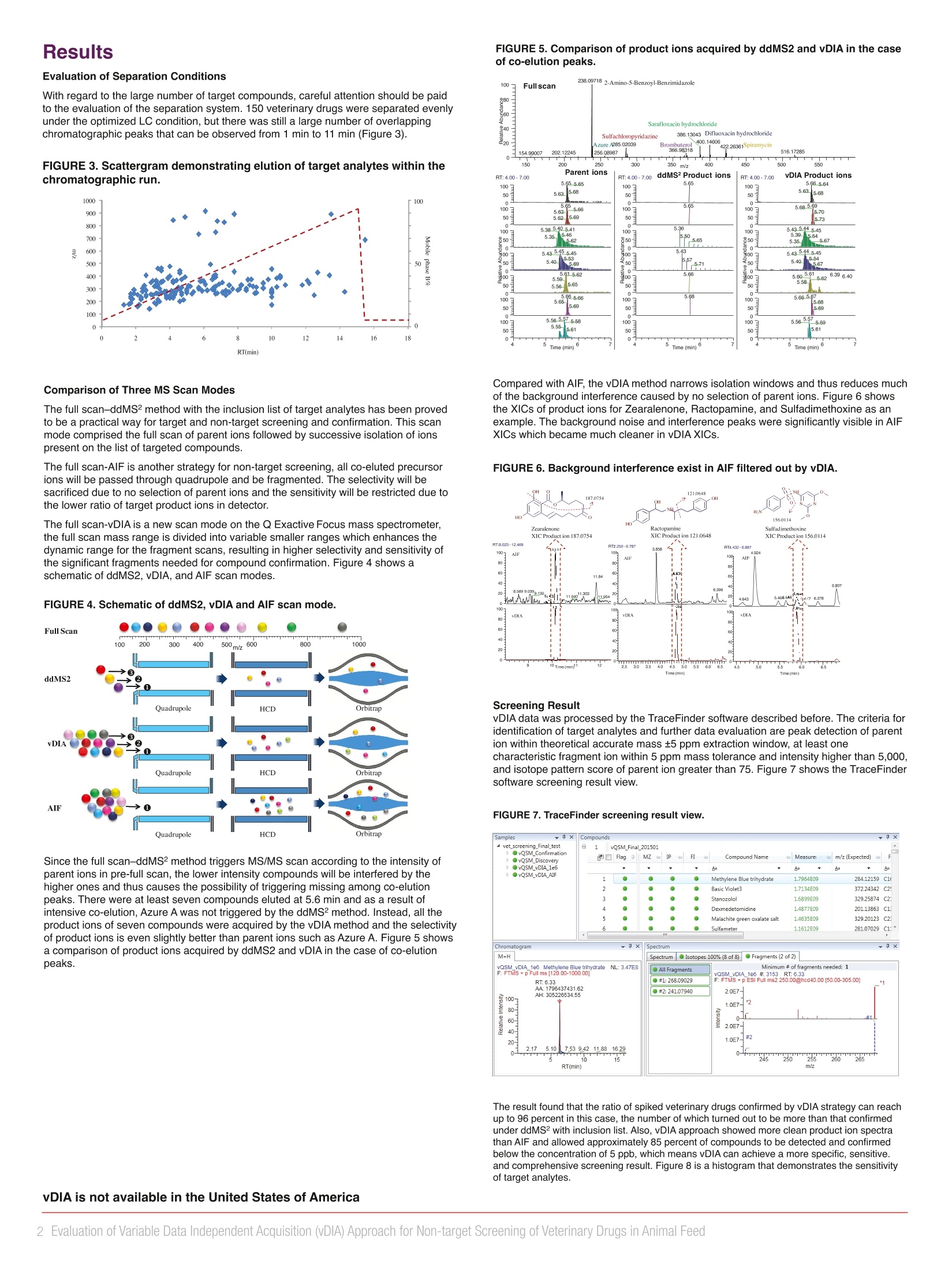

还剩1页未读,是否继续阅读?
赛默飞色谱与质谱为您提供《食品、农产品中Q Exactive Focus vDIA模式下非目标兽残检测方案(液相色谱仪)》,该方案主要用于饲料中兽药检测,参考标准--,《食品、农产品中Q Exactive Focus vDIA模式下非目标兽残检测方案(液相色谱仪)》用到的仪器有赛默飞 Vanquish Flex UHPLC系统
推荐专场
相关方案
更多
该厂商其他方案
更多

